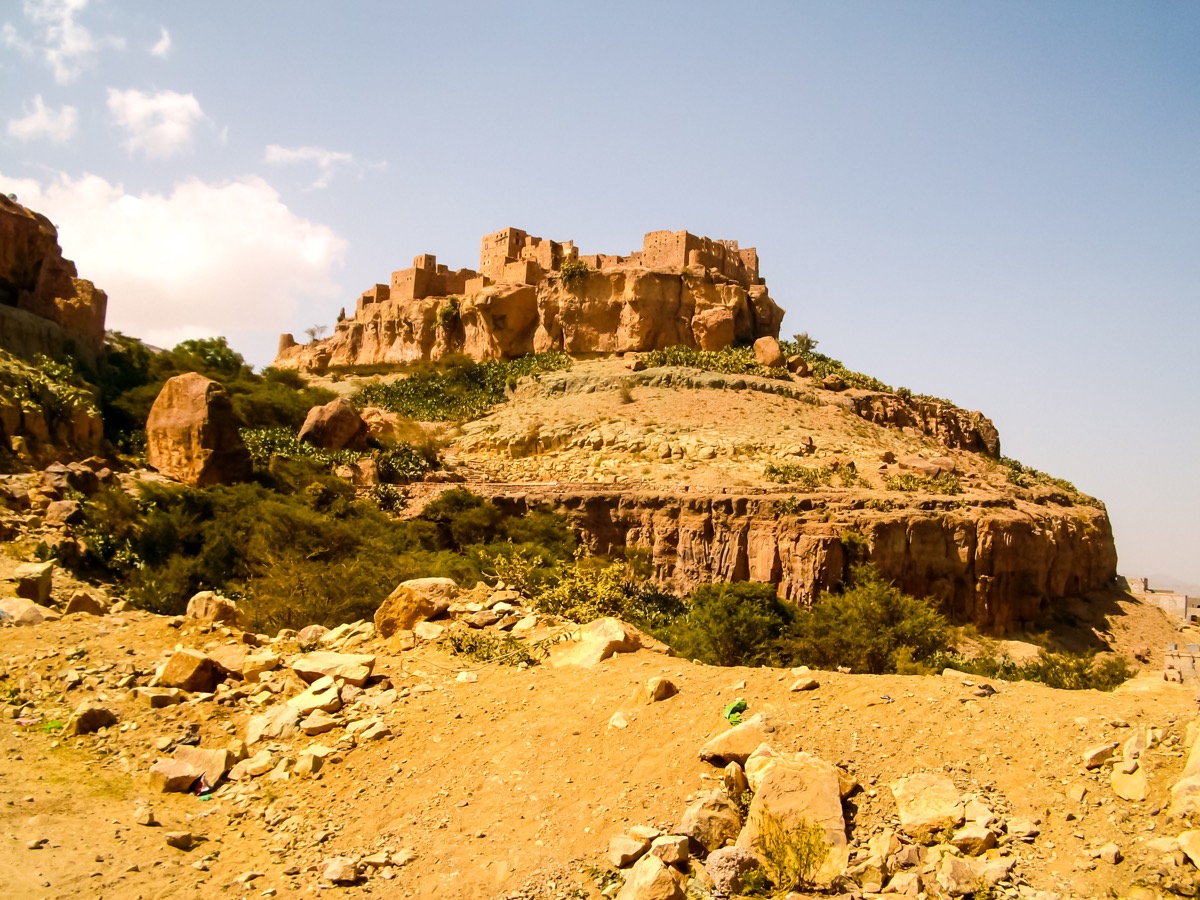Ancient Inscription Points to Lost Temple of Unknown God in Yemen

A 2,000-year-old bronze tablet from Yemen, has engraved writing that mentions a lost temple dedicated to a god named "Athtar Ḥarmān," a deity whom scholars have never heard of before.
Written in the Sabaic language, in a text known as Sabaean, the bronze inscription reads:
"Ilīmataʿ and Khabīʾat, the two servants of Khawliyān offered to Athtar Ḥarmān, the owner of Bana, with a tablet of bronze, their sons and those he will add, for their salvation" (translation by Christian Robin). [Cracking Codices: 10 of the Most Mysterious Ancient Manuscripts]
"This plaque comes from a temple dedicated to the god Athtar Ḥarmān," Robin, researcher emeritus at the French National Centre for Scientific Research, told Live Science, explaining that "Bana" is a name used for a temple. "This god and his temple were unknown previously. Some details suggest that this temple was in the vicinity of Ṣan'ā' [also spelled Sanaʽa, a city which is the capital of Yemen]," Robin said, adding that he believes the tablet dates to the first century B.C.
Historical records tell of a number of kingdoms that flourished in Yemen more than 2,000 years ago, some of them involved in the trade of incense and spices.
The bronze tablet, which was recently put up for auction by Artemis Gallery, a company based in Colorado, comes with a number of mysteries: Who is this god and where is his lost temple? Who are the people named on the tablet? And how did the tablet get to the United States?
Ancient clues
The text provides a few clues, suggesting that the temple is located not far from Ṣan'ā', Robin said. Another Saba language inscription discovered in 1909 at the site of Shibām al-Ghirās, located northeast of Ṣan'ā', refers to a "Bana" located at Shibām al-Ghirās.
Sign up for the Live Science daily newsletter now
Get the world’s most fascinating discoveries delivered straight to your inbox.
Additionally, the name "Khawliyān" is mentioned in another inscription, found at a site called Maḥram Bilqīs, which lists the "name of princes of the commune Ayfa," Robin said. Scholars are not certain where exactly Afya was located, but the people who lived there were "Fayshānite," a group that lived in the area around Ṣan'ā', Robin said.
Looting concerns
Yemen has been in a state of civil war since 2011, and the International Council of Museums has raised concerns that artifacts from Yemen are being looted and sold on the black market. In January 2018, the council published a "red list" of types of cultural artifacts from Yemen that could be looted from the country.
The council listed ancient writing on stone or metal plates as one type of artifact to watch out for. Several scholars told Live Science they were concerned that the bronze tablet may have been looted.
Bob Dodge, the founder and executive director of Artemis Gallery, said that the gallery's research indicates that the tablet was not recently looted.
"This was acquired from a California auction house in 2015 and came to them from an old New Orleans collection," Dodge told Live Science. We are attempting to trace the prior history but have been told the former owner is thought to be deceased and was a collector of such [items] between 1970 and 1990.
"Should we find any evidence that this was recently imported, we will immediately pull the item from the sale, or should it [the discovery of such evidence] occur after the sale is completed, we will inform the new owner and request that we buy it back and return it to the consignor," Dodge added.
- 30 of the World's Most Valuable Treasures That Are Still Missing
- The 25 Most Mysterious Archaeological Finds on Earth
- In Photos: Stunning Discoveries at Angkor Wat
Originally published on Live Science.

Owen Jarus is a regular contributor to Live Science who writes about archaeology and humans' past. He has also written for The Independent (UK), The Canadian Press (CP) and The Associated Press (AP), among others. Owen has a bachelor of arts degree from the University of Toronto and a journalism degree from Ryerson University.










